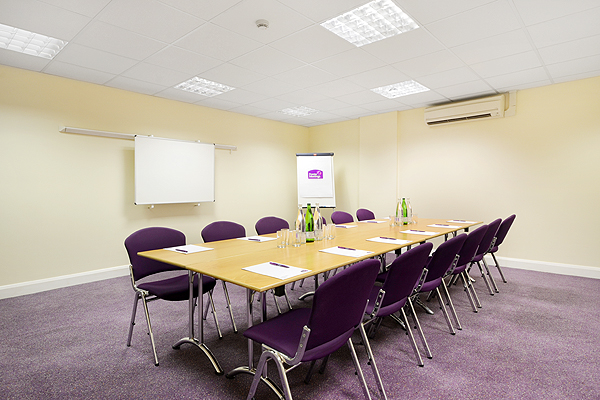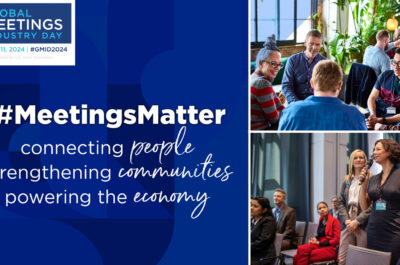New Cebr and Premier Inn report measures the impact of face-to-face meetings.
Face-to-face meetings make an annual contribution of £193 billion to the UK economy according to a report published by the Centre for Economics and Business Research (Cebr) and Premier Inn, the UK’s leading hotel chain. This contribution is based on a representative study of the total number of UK private sector businesses.
The Measuring Face Value report demonstrates that, when a company does business face-to-face, it stands to gain an average income boost of £147,200 per year.
This research has found that the increase in revenue varies according to size of business. Where small companies can each expect an income boost of £43,200 on average per year, mid-sized businesses will each see a gain of £3.7 million per year.
Karen Plumb, Director of Business to Business at Premier Inn, comments: “We all know that when we are meeting virtually, whether on a video or phone call, not everyone is engaged 100% of the time. Welcoming millions of business guests each year, Premier Inn understands how valuable face-to-face interaction is for our customers. Guests stay with us when they’re travelling to all kinds of face-to-face business meetings – from site visits and conferences to new business pitches and brainstorms.”
When it comes to securing new business, just by walking out of their front door and going to meet prospects in person, a company is in line to increase revenues by an average £52,400 per year.
Manufacturing organisations see the most benefit. By investing £123,600 on face-to-face interaction, each individual manufacturing firm sees a revenue boost of £514,000 annually resulting from meeting in person. In other words, for every £1 spent on business travel by manufacturing companies, £4.16 worth of additional income is generated over and above the intrinsic value of face-to-face contact with their clients and prospects.
Retail organisations also notch up significant gains, each generating an additional £378,000 income per year as a result of meeting face-to-face.
More than half of employees working in small businesses prioritise face-to-face meetings with their potential and existing customers. Medium-sized businesses also value the power of human interaction, with almost half (40.9%) of their employees regularly meeting customers and prospects face-to-face.
Regional variations are in evidence, with London-based businesses benefiting most from face-to-face meetings and earning a £248,100 average annual revenue boost each. Businesses in the West Midlands rank second with a £174,500 annual income gain per business, followed by organisations in the South East seeing a £156,800 increase in revenue annually.
Companies in the North East see the highest return on investment. On average, for every £1 spent doing business face-to-face these companies see an increase of £5.34, equating to a 434% return on investment.
Karen Plumb, Director of Business to Business at Premier Inn, continues: “Premier Inn commissioned this latest report as part of our ongoing research into the needs of our business guests. Human interaction has long been recognised as important in business but I am pleased that we can now pinpoint precisely how much it’s worth to UK companies.
“These figures may encourage some businesses to reflect on their own balance of virtual and face-to-face interaction, and to consider how getting that balance just right can have a positive impact on their bottom line.”
Nina Skero, Senior Economist at the Centre for Economics and Business Research, comments, “Whilst our research does not prescribe a single, optimal balance of face-to-face and virtual communications, it clearly demonstrates that businesses should be striving for a blend of both. The proven financial contribution of face-to-face meetings to our economy is considerable and shows no signs of diminishing.”
Denise Taylor, chartered psychologist and career coach, suggests some of the drivers behind the effectiveness of face-to-face business meetings:
- It’s often the case that on phone or video calls, attendees can zone out. They may respond to emails mid-call, or flick through their notes. 100% engagement in the moment isn’t guaranteed when your meeting is virtual.
- Body language plays a massive part in business communications. A subtle shrug or firm handshake can make a huge difference to the final outcome.
- Doing business through a screen can make getting your point across challenging. People can miss the nuance or misunderstand far more easily than when you’re face-to-face. Communicating virtually may also put people off asking for clarification because there can be a sense of hurriedness.
- There’s a great chance to build a sense of teamwork and co-operation when you’re in the same space.
- Taking the time to step away from your desk and show customers, clients, suppliers or other associates that you care enough about your relationship to visit them in their own environment is a great message, and says a lot about your overall approach to doing business.
- When people are together in the same place, they are more likely to feed off one another and spark creativity, innovation and solution-led thinking.
Vicky is the co-founder of TravelDailyNews Media Network where she is the Editor-in Chief. She is also responsible for the daily operation and the financial policy. She holds a Bachelor's degree in Tourism Business Administration from the Technical University of Athens and a Master in Business Administration (MBA) from the University of Wales.
She has many years of both academic and industrial experience within the travel industry. She has written/edited numerous articles in various tourism magazines.


































































































































































































































